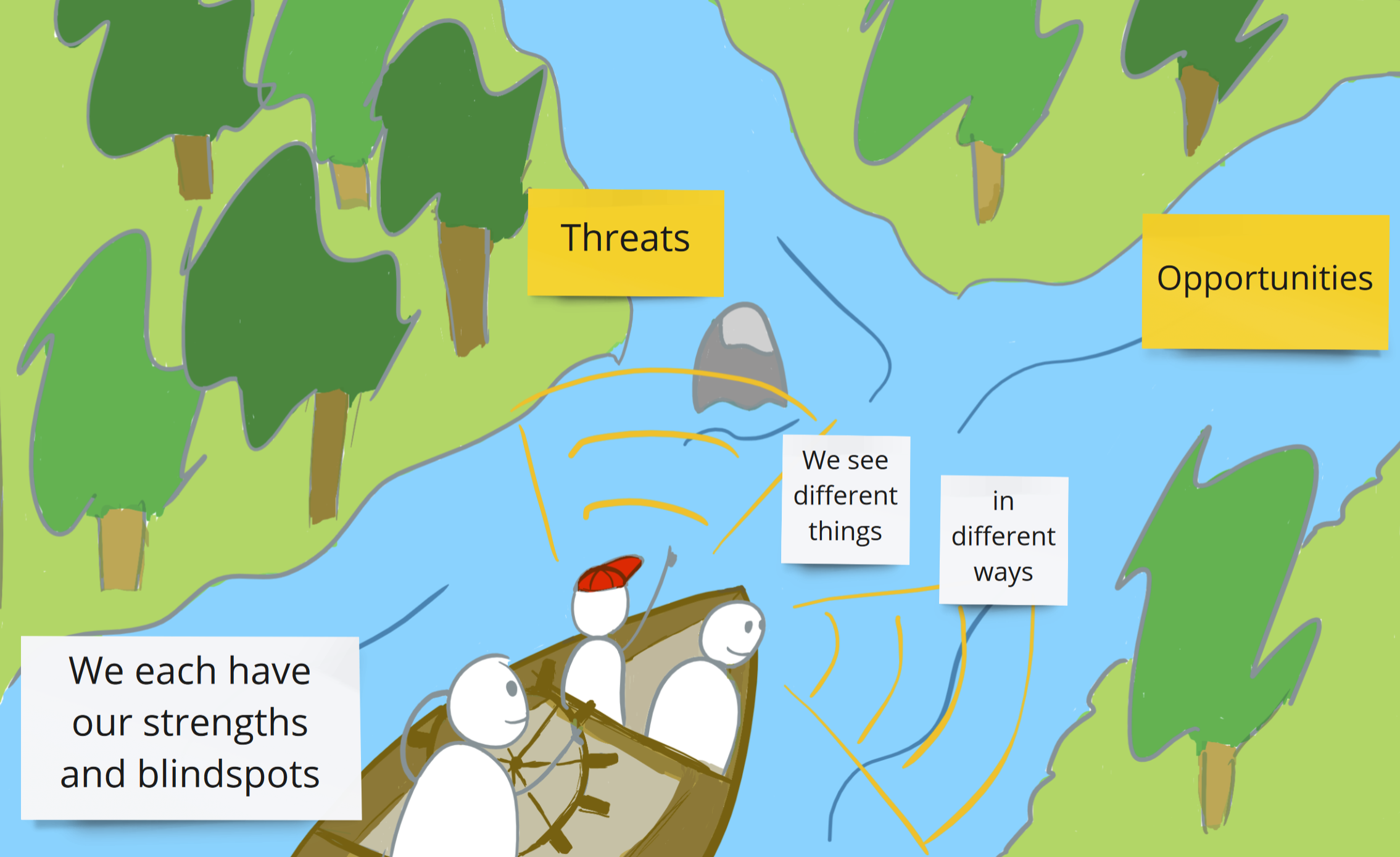
Throughout history, learning combined with an ability to work well together – have resulted in higher and higher productivity (defined as efficacy + efficiency).
Learning adapts to the learner’s needs and provides a sense of competence + progress. It results in an ability of “doing” (not just “knowing”) in various circumstances, without extra supervision.
Collaboration supports the human need for connection and recognizes us for our efforts by offering timely feedback. Allows us to use each other’s strengths and to cover each other’s blind spots by providing a clear line of communication – consistently.
We are ‘humans’ – first, and ’employees’ – second
Beyond productivity and performance indicators we have a few basic needs which include:
Competence and mastery 💪 — acquired by being given the chance to perform above the expectation of our role, and to grow through learning opportunities that make us better.
Community and belonging 👨👩👧👦 — the product of fair and respectful relationships with colleagues, and the sense that one is appreciated at work. This is why company culture is such a pivotal factor in driving satisfaction or dissatisfaction among employees.
Meaning and purpose 💗 — a feeling that we are devoted to something that matters, and that aligns with our core values and drivers.
A fulfilling and sustainable working environment works with these in mind…
🖼 A postcard – how good collaboration looks like
⭐ — Being clear and explicit about our expectations and values
😔 — Realizing that we are not the only ones who struggle with
< insert challenge here >
😃 — Encouraging peer learning for common challenges like
“balancing home schooling and work”
👪 — Cultivating a culture of “we are in this together”
👍 — Giving each other the benefit of the doubt…
“What are possible explanations which don’t make anyone look bad ?”
🕵️♂️ — Reality-checking our assumptions with open questions and active listening
🤙 — Building in feedback mechanisms to catch disagreements early before they get out of hand
😊– Encouraging multiple paths to fulfill people’s needs.
e.g. a character can be individualistic or cooperative
For more, please see this great article on remote collaboration.
“Remote work” can mean so much more than “out of touch”
Remote work doesn’t need to replicate the office – which has many limitations. The ideal scenario would be to switch between using the right tools (consistently and well) such that the weaknesses cancel out and the strengths add up.
The right tool for the job varies depending on the activity in question, team/organization culture and the particularities of the individual.
Teams need just a little bit of process to create predictable results. Information needs to flow to the right places (and people) at the right time. The best teams have figured this out and learned to sustain predictable habits and rhythm.
I would like to differentiate between two types of collaboration: Immediate & Delayed – and describe their corresponding strengths and limitations:

When differentiating based on location. Each style has it’s vulnerabilities:
Co-located – in the same building
- We have gone from cubicles to open spaces – still looking for the right balance.
- Fundamentally, it is difficult to create a flexible work environment because everyone is required to be together, at the same time.
Remote – from a distance
- Can lead to feeling lonely and disconnected. It affects whether we perceive our work as being seen and recognized too.
- Some people experience their environment as a large factor affecting focus and motivation. Others simply do not have an extra room that is quiet, well lit and ventilated.
- In the end, collaboration can be more difficult. This should be no surprise if the majority of communication happens in a delayed and limited format.
On the positive side, working remotely can be:
- Convenient and flexible. Time savings due to less need for travel; Cost savings on travel, on fewer meeting rooms / other office costs
- Participatory and inclusive: e.g. designers can include other cultures and demographics in their user studies, workshop sessions or even teams
Remote collaboration done well is “Participatory” and simplifies the path to visual collaboration. The Forrester / Mural Economic Impact Report brings further evidence.
Of course, compromises are a part ofthe real world. Especially now when we have less freedom of movement. As teams, a worthy goal would be to consciously experiment and slowly master more of these digital practices.
When things slowly return to normal and we can be co-located in the same building, we may want to keep using some of these new habits. What will surely stay with us is the learned ability to adapt, experiment and the team bonding that this process has built.
Summary
The aim of this article was to paint a postcard in which we are more resilient and stronger at collaboration. To present a vision where we are able to work with less distractions, setting up our environment to do the best work we can. Building relevant skills, human connection and stronger work practices that we’ll want to keep even when we don’t “have to” work remotely.
We should never, especially in the worst of times, lose sight of the fact that humanity’s power to adapt and quickly get to new, higher levels of well-being is much greater than all the bad stuff that can be thrown at us.
Ray Dalio – The Changing World Order
📞 Get in Touch
I am happy to learn more about your needs…
If you would like to discuss how Design can help your co-workers learn and work, send me a free message on LinkedIn.
